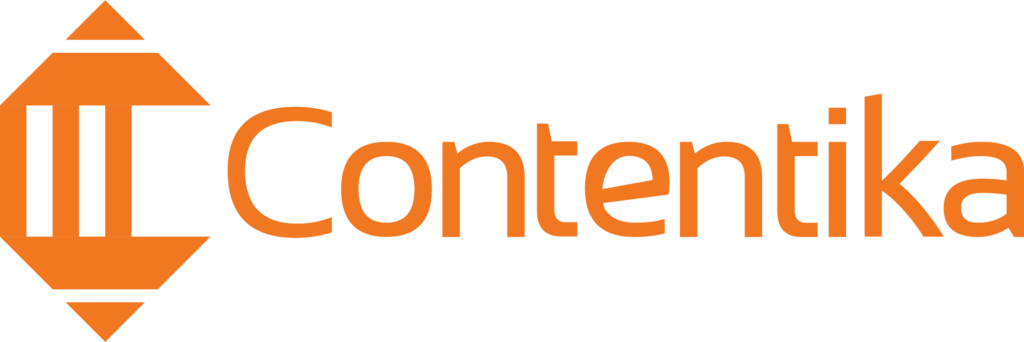Content marketing is a necessary evil! Okay, necessary? Yes. Evil? Not necessarily —provided you take the proper precautions. Content marketing is the lifeblood of your online presence, but it can also be a massive drain on your resources if you’re not careful.
That’s why creating a content marketing budget will allow you to produce the unique content your audience demands without breaking the bank.
Roughly two-thirds of small businesses in the US don’t have a formal budget, and many of those that do are not allocating enough resources to their efforts. This is often because business owners don’t understand how to create a budget that will suit their needs.
Consequently, companies spend money on digital marketing initiatives and miss out on opportunities to connect with their target audience. Creating it is not as difficult as it may seem. Following a few simple steps, you can develop a budget to help your business achieve its goals.
This article will provide a step-by-step guide to creating a budget that works for your business.
What Is a Content Marketing Budget?
A content marketing budget is the money a company or organisation spends to create and distribute content for marketing purposes. The budget may include hiring writers and designers, paying for distribution platforms, and purchasing advertising.
The size of a budget will vary depending on the goals and resources of the company or organisation. A small business with limited marketing resources may have a budget of just a few thousand dollars, while a large corporation may have a multimillion-dollar budget.
Content marketing budgets are often part of larger overall marketing budgets. For example, a company with an annual marketing budget of $100 million might allocate $10 million to content marketing efforts.
Why Do You Need a Content Marketing Budget?

There are several reasons why it’s essential to set aside money for content marketing. First, content marketing can be an effective way to reach your target audience. Creating and distributing content can engage potential customers and build relationships with them.
Second, a well-executed content marketing strategy can help you save money on other marketing efforts. For example, building a strong online presence through content marketing can lead to increased organic search traffic and reduce the need for paid advertising.
Third, a budget can help you measure the results of your efforts. By tracking how much money you spend on content marketing and comparing it to your results can help you determine if your efforts are paying off and make adjustments as necessary.
Finally, a budget can help you plan for the future. By setting aside money for content creation and distribution, you can ensure that your business continues to have a strong online presence and connect with customers.
How to Create a Content Marketing Budget

Now that you understand the importance of creating a budget, let’s discuss how actually to create one four steps you can follow:
Determine Your Content Marketing Goals

The first step in creating a content marketing budget is determining your goals. Do you want to increase brand awareness? Drive traffic to your website? Generate leads?
Your budget should be aligned with your overall marketing strategies. For example, if you’re trying to increase brand awareness, you’ll need to create a lot of content and distribute it widely. On the other hand, if you’re focused on generating leads, you’ll need to create targeted content and ensure it’s distributed to the right people.
Set specific, measurable, achievable, relevant, and time-bound (SMART) goals for your efforts. This will help you track your progress and determine whether your budget is well spent.
Decide How Much Money You’re Willing to Spend

The next step is to decide how much money you’re willing to spend on content marketing. This will depend on your goals, resources, and marketing budget.
You may need to get creative with your efforts if you have a limited budget. For example, you could create blog posts instead of videos or host a webinar instead of an in-person event.
On the other hand, if you have a larger budget, you can afford to be more aggressive with your basic content strategy. You could hire a team of writers and designers to create original content.
Choose the Right Mix of Content Marketing Activities

Once you’ve determined your budget, it’s time to choose the right mix of content marketing activities. You can create many different types of content, so selecting the ones that will best help you achieve your goals is essential.
Some of the most popular types of content marketing include blog posts, infographics, ebooks, webinars, and videos. Once you’ve selected the type of content you want to create, you’ll need to decide how you’re going to distribute it.
It’s also important to consider the format of your content strategy. For example, if you’re creating a blog post, should it be text-based or include images? What kind of data should you include if you’re creating an infographic?
Once you’ve selected the right mix of content marketing activities, you can start to allocate your budget. Be sure to leave room in your budget for experimentation so you can try new things and see what works best for your business.
Track Your Results and Adjust Your Budget Accordingly
Finally, tracking your results and adjusting your budget accordingly is crucial. This will help you determine whether your efforts are paying off and make necessary changes to ensure you’re getting the most out of your budget.
You can track several metrics, but some of the most important ones include website traffic, generated leads, and deals closed. Be sure to track these metrics regularly and adjust your budget accordingly.
If you do not see the desired results, don’t be afraid to experiment with different types of content or change up your distribution strategy. Sometimes it takes trial and error to find what works best for your business.
Creating a budget may seem daunting, but it’s essential for any business that wants to use content to achieve its marketing goals. Following the steps outlined above, you can develop a budget to help you reach your target audience and achieve your desired results.
Factors to Consider When Creating a Content Marketing Budget
When creating a budget, several factors must be considered to ensure that your investment is effective and efficient. Here are some essential factors to keep in mind:
Audience Targeting
Your audience is one of the most important factors when creating a budget. Knowing who you want to target with your content is essential to create effective and engaging content that will reach your target market, which they will find valuable enough to engage with.
If a business is targeting a specific niche audience, it may need to invest more resources in researching and understanding that audience to create relevant and compelling content. On the other hand, a broader audience may require a larger budget for distribution and promotion.
Additionally, the cost of producing customized content for different audience segments can also impact the budget.
Channel Strategy
What platforms will you distribute your content on? How often will you post new content? Who will create the content?
For example, suppose you plan to use a mix of social media platforms and your website to share infographics and other text-based content. In that case, you’ll need to factor in the cost of hiring a writer or team of writers and the time it takes to design and promote each piece of content. If video is a vital part of your strategy, you’ll need to budget for production costs and distribution across various channels.
Similarly, if you’re targeting a B2B audience, LinkedIn may be a more effective platform than Facebook. Again, it’s all about knowing your audience and selecting the channels they’re most likely to use.
Content Formats
For content production, it’s essential to think about the types of content that will best achieve your marketing goals and still makes sense. For example, if you’re looking to generate leads, you may want to create ebooks or white papers that require a form submission.
On the other hand, if you’re looking to increase brand awareness, infographics may be more effective. The key is to select content formats that will resonate with your target audience and help you achieve your desired results.
Production Costs
Production cost is the amount of money a company spends to create a product or service. This includes the cost of labor, materials, and overhead.
When creating a content marketing budget, production costs must be considered. This is because they will play a role in how much money needs to be set aside for content creation.
One way to decrease production costs is to use recycled or repurposed content. This can be done by reusing old content. For example, blog articles could be turned into an infographic or videos.
Another way to reduce production costs is to use free or low-cost tools and resources. Many online tools can be used to create admirable content, such as Canva and Piktochart.
In addition, consider using freelance writers or content creators. This can be a cost-effective way to get the content you need without breaking the bank, and it is also time managing.
Promotional Cost
Promotional cost is the amount of money a company sets aside to market and promote its products or services. This includes paid ads, public relations, and events.
Promoting content includes social media and paid advertising. The key is to select the channels that will work best for your business and your budget.
It’s also important to consider how often you’ll need to promote your content. For example, if you’re creating a post, you’ll need to promote it more than once to see results. The same is true for infographics and videos.
Elements to Include in a Content Marketing Campaign

Skilled Marketing Team
First and foremost, you need a skilled content marketing team to execute your content marketing strategy. This sales team should be composed of content marketers with experience in creating and promoting content and those with expertise in specific areas like search engine optimisation (SEO), social media marketing, digital marketing, and other departments.
If you don’t have the internal resources to create a content marketing team, you may need to outsource some or all of the work to a third-party agency. This can be costly, but it’s often worth having access to the expertise and human resources needed to execute an effective content marketing strategy.
Without a skilled marketing team, there is a higher risk of haphazardly throwing money at various tactics without a clear strategy or plan for measuring success. Ultimately, having a marketing team can help maximize the effectiveness of the content marketing budget.
Here are some roles you need to invest in as part of your new budget.
SEO Writer
Investing in a few good SEO writers or hiring an experienced SEO manager can significantly affect how well your content performs in search engine results pages (SERPs).
SEO specialists know how to optimise your relevant content for the keywords you’re targeting and other important ranking factors like meta descriptions, title tags, and alt text. They can also help ensure that your website and individual pieces of content are correctly indexed and crawlable by search engines.
If you don’t have any in-house SEO writers, you may be able to find some freelance writers who can help with specific pieces of content or projects, which may cost $100-$2000, depending on the experience level.
Social Media Manager
A social media manager will help promote your content across different platforms. They’ll develop a social media strategy that aligns with your business goals and post content regularly.
They’ll also monitor social media channels for mentions of your brand or product and engage with customers or followers as needed. A social media manager may cost $250-$5,000 per month, depending on the size of your company and social media following.
Content Editor
A content editor will help ensure that all your content is high-quality and error-free. They’ll edit articles, ebooks, infographics, and other types of content before it’s published.
A content editor may also help develop new ideas for content, provide feedback on drafts, and manage the editorial calendar. A good content editor may cost $500-$3,000 per month, depending on their experience level and the scope of their role.
Graphic Designer
A graphic designer can help bring your content to life with engaging visuals. They can create graphic design, infographics, illustrations, graphs, and other types of images to supplement your written content.
If you don’t have a full-time graphic designer on staff, you may be able to find a freelance designer who can help with specific projects. The cost of a freelance graphic designer may range from $50-$150 per hour, and their costs depend on their experience level and the project’s scope.
Project Manager
You may need to invest in a project manager or a content marketing manager if you work with multiple team members or outside agencies on your content marketing strategy. A project manager can help keep everyone on track and meet deadlines.
They can also help develop processes and systems to make content creation and promotion more efficient. A project manager may cost a few hundred dollars per month, depending on their experience level and the scope of their role.
This is just a tiny sampling of the roles you need to consider as part of your budget. As you can see, many costs are associated with creating and promoting perfect content.
Analytical Tools

To measure the success of your efforts, you’ll need to invest in some analytical tools. These tools will allow you to track website traffic, engagement metrics, conversions, and more.
There are several different analytical tools on the market, so it’s essential to do your research and choose the ones that will best fit your needs. Some popular options include:
Google Analytics: Google Analytics is a free tool from Google that provides detailed insights into website traffic and user behaviour.
KISSmetrics: KISSmetrics is a paid tool that offers robust tracking and reporting features for businesses of all sizes.
Mixpanel: Mixpanel is another paid option that provides detailed analytics for businesses of all sizes.
Technological Tools

Technological tools can significantly streamline content marketing, making it more efficient and cost-effective. It can also provide valuable data and insights that inform budget allocation and optimization. On the flip side, investing in these technologies often requires an initial financial investment, which may impact the overall content marketing budget.
When it comes to technology, there are a lot of different software tools that can help you with your content marketing process. Some of these tools are essential, while others are more optional. Here is a look at some of the different types of technologies that you might want to use for your content marketing:
Content Management Systems (CMS)

A content management system (CMS) is a software application that helps you create, edit, and publish content. Different types of CMSs are available, and they vary in terms of features, ease of use, and price.WordPress is one of the most popular CMS platforms in use today.
Email Marketing Software

Email marketing software enables you to send subscribers newsletters, promotional materials, and other emails. This software often includes automated email list management, template creation, and email deliverability tracking. MailChimp is one of the most popular platforms.
Social Media Management Tools

Social media platforms like Twitter, Facebook, and LinkedIn can be great places to promote your content. However, if you don’t have a budget for social media, you may not be able to take full advantage of these platforms.
Several management tools can help you save time and money while promoting your content. Hootsuite is one such tool that offers a free plan and paid plans starting at $49.99/month.
If you are serious about content marketing, you should consider investing in a social media management tool. This will allow you to promote your content, reach a larger audience more effectively, and generate more traffic to your blog.
Content Creation Tools

Various content creation tools are available to content marketers, and the right tool depends on your specific needs. If you’re creating written content, you’ll need a word processing program like Microsoft Word or Google Docs.
For visual content, you’ll need an image editing program like Adobe Photoshop or Canva. And if you’re creating video content, you’ll need a video editing program like Adobe Premiere or iMovie.
Keyword Research Tools

These tools help generate necessary keywords relevant to your content strategy, aid in monitoring the progress of your content marketing campaign and help in competitive analysis. The most commonly used keyword research tools are Google AdWords Keyword Planner, KW Finder, WordStream, and Long Tail Pro.
Some of these tools are free, while others are paid, starting from $29 -$500 per month. Choosing the right keyword research tool depends on your needs, and budget is essential.
Regarding this, it is vital to target long-tail keywords rather than short-tail ones. Long-tail keywords are more specific and are less competitive. They also have a higher conversion rate since they are more targeted.
Tips To Maximize Your Content Marketing Budget

As a business owner, you know how important it is to get the most out of every dollar you spend— especially regarding your budget. That’s why it’s critical to make sure your budget is being used in the most effective way possible.
Here are a few tips for getting the most out of your budget:
Plan Ahead
Content planning is the best way to ensure your budget is used effectively. This means creating an effective content strategy and budget that will allow you to produce content regularly. Staying on track and making the most of your budget can be difficult without a plan.
Focus on Quality Over Quantity
It’s better to have a small number of high-quality pieces of content than many low-quality ones. Not only will the former be more effective at achieving your marketing goals, but it will also be more cost-effective.
To produce content, you must invest in experienced and talented writers, editors, and designers. While this will cost more upfront, it will pay off in the long run.
Work with a Content Marketing Agency and Freelancer
Working with a content marketing agency can help you save time and promote your content strategy. They can provide valuable feedback to improve and execute a successful content marketing strategy.
If you are on a small budget, you may consider working with a freelancer instead of a content marketing agency. When selecting a freelancer, ask for samples of their work so you can get an idea of their writing style and quality.
Leverage In-House Employees
This is a great way to get the most out of your content marketing budget. If you have a full-time employee who is already familiar with your brand and understand your target audience and If they have the skills and knowledge to produce quality content, leverage their talents to save on content marketing costs. These in-house team members can be great resources for creating articles, posts, and more.
Repurpose Your Content
If you’re struggling to create content regularly, another option is to repurpose your existing content. This means taking an old article and updating it with new information or packaging it in a different format— such as an infographic or video. You can save time and money by repurposing your content while providing valuable information to your audience.
Keep An Eye On ROI
Finally, keeping an eye on your return on investment (ROI) in content marketing is essential. This will help you determine whether or not your content marketing efforts are paying off. If you do not see a good ROI, you may need to reevaluate your strategy and budget.
By following these tips, you can make the most of your content marketing budget and produce quality content that will attract new customers and grow your business.
Conclusion
Without a content marketing budget, your business is at a disadvantage. A budget allows you to create and distribute high-quality content to reach your target audience and help you achieve your business goals.
The most important thing to remember when creating a budget is to be realistic. There are a lot of factors that go into effective content marketing, and each one costs more money.
Your content marketing process will likely fall flat if you don’t have the proper budget. But with careful planning and execution, a budget can be a powerful tool to help you reach your business goals.
If you take the time to create a well-thought-out budget, you’ll be in a much better position to achieve your business goals. So what are you waiting for? Get started today!
Budget Templates
Content marketing is the lifeblood of your online presence, but it can also be a massive drain on your resources if you\\\'re not careful.
Download For Free












